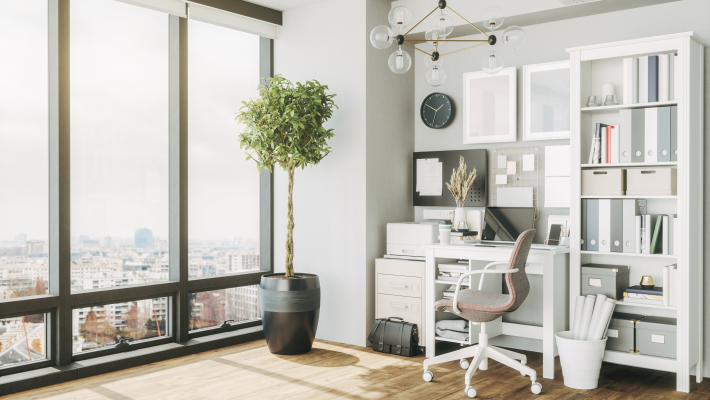Although mortgage rates are in flux (once again) thanks to the problems in the banking industry, they’ve been soaring well above the halcyon days of late 2020 and early 2021 – and that has significantly cooled the once-wild housing market.
These days, buyers are fewer – and those that do come around are looking for ways to save money. That’s convinced a lot of property sellers (and lenders) to work with buyers and offer things like a mortgage buydown as an incentive to make a deal.
A buydown is a method of financing a mortgage in a way that lowers the monthly payment that the buyer has to pay. The idea is to give the buyer time to establish themselves in the property, shore up their finances and let the real estate market settle – and, hopefully, refinance to a lower rate once interest rates cool again. They’re also useful for buyers who expect to resell the property again within a few years.
How Does a Mortgage Buydown Work?
If you’ve been researching how financing works with mortgages, you’re probably already aware of “points,” which are basically a type of prepaid interest that you can opt to pay either before or at closing.
Each point costs 1% of your mortgage loan, so it would cost $2,500 to buy one point on a $250,000 loan and $5,000 to buy two points. Exactly how much each point ultimately lowers your interest rate, however, can vary greatly from lender to lender. One point might only lower your interest rate by ½ of a percent – but that still can equal significant monthly savings.
Often, points are used to permanently lower the amount of the interest rate on the loan, which is especially useful if someone intends to stay in a house for a long while. That gives them a better chance of recouping the initial dollar outlay over time.
Points are also used, however, to create temporary interest rate reductions that only last for the first year or two. In this kind of buydown, the seller or builder (and, sometimes, even the lender) offers to subsidize the interest rate for whatever period is agreed upon. For example:
- Imagine you want to buy a $250,000 home. At a 5% interest rate for a 30-year loan, you’d pay about $1,342 per month.
- If the seller is willing to participate in a buydown and pay the cost upfront for one year to lower your interest rate to 4%, you would only have to pay about $1,193 per month, saving you $149 on each payment.
- The seller, then, would deposit $1,788 (12 months of the discount, assuming a 1:1 ratio) into a custodial account that can be drawn on each month by the lender to make up the difference between what you’re paying and what your mortgage would be without the buyout.
There are numerous different ways that these deals can be structured, but two of the most common are 3-2-1 buydowns and 2-1 buydowns. In a 3-2-1 buydown, the interest rate is lowered by 3% in the first year, 2% in the second and 1% in the third, with the full mortgage payment starting with the fourth year. A 2-1 buydown only gives you a 2% interest rate reduction for the first year and 1% for the second, rising to the full amount when the third year starts.
What’s the Benefit of a Buydown to the Seller or Lender?
The benefits of a buydown mortgage for the buyer are obvious: You can ease the sticker shock that many buyers are having right now when they look at their potential mortgage payments. The temporary reprieve can give them time to adjust to the bigger payment or help them pay for small repairs and other things they need for the home.
Temporary buydowns also serve as an enticement for skittish would-be buyers. When the housing market has far more buyers than sellers, temporary buydowns tend to fall by the wayside. When the balance of power shifts back to the buyers, they get popular again. For a seller that needs to unload their home because they want to retire, move or downsize, that’s often worth the additional cost. For a builder, that’s preferable to having houses sitting empty. For lenders, that’s an incentive that can give them an edge over their competition.
There’s another collateral effect of a temporary buydown that can benefit both buyer and seller, especially if the seller is a builder: A buydown can make it possible that they can offload the property without having to compromise on the selling price. That helps maintain or boost the property values all around.
Are You Able to Secure a Buydown Mortgage?
Sellers sometimes offer temporary buydowns upfront, but you may have to ask for them. Since there’s very little that’s not open to negotiation, it’s definitely worth a try. They may be particularly useful right now since the recent bank failures have suddenly created an economic ripple in the housing market that’s lowering interest rates. Buyers who are willing to gamble that the rates will lower significantly again in a few years when they can afford to refinance may find their faith to be well-placed.
To qualify for a temporary buydown, the lender first has to determine that you can afford to repay the mortgage once the temporary interest rates are gone. That means checking your debt-to-income ratio and other financials very carefully before you apply for pre-approval.
amanda.phillips@talktotucker.combill.ingram@talktotucker.combrad.layton@talktotucker.comeditors-pickerina.pribyshchuk@talktotucker.comfeaturedlloyd.zimmerman@talktotucker.commark.callahan@talktotucker.commary.layton@talktotucker.compriscila.hale@talktotucker.comterri.mcgraw@talktotucker.com



